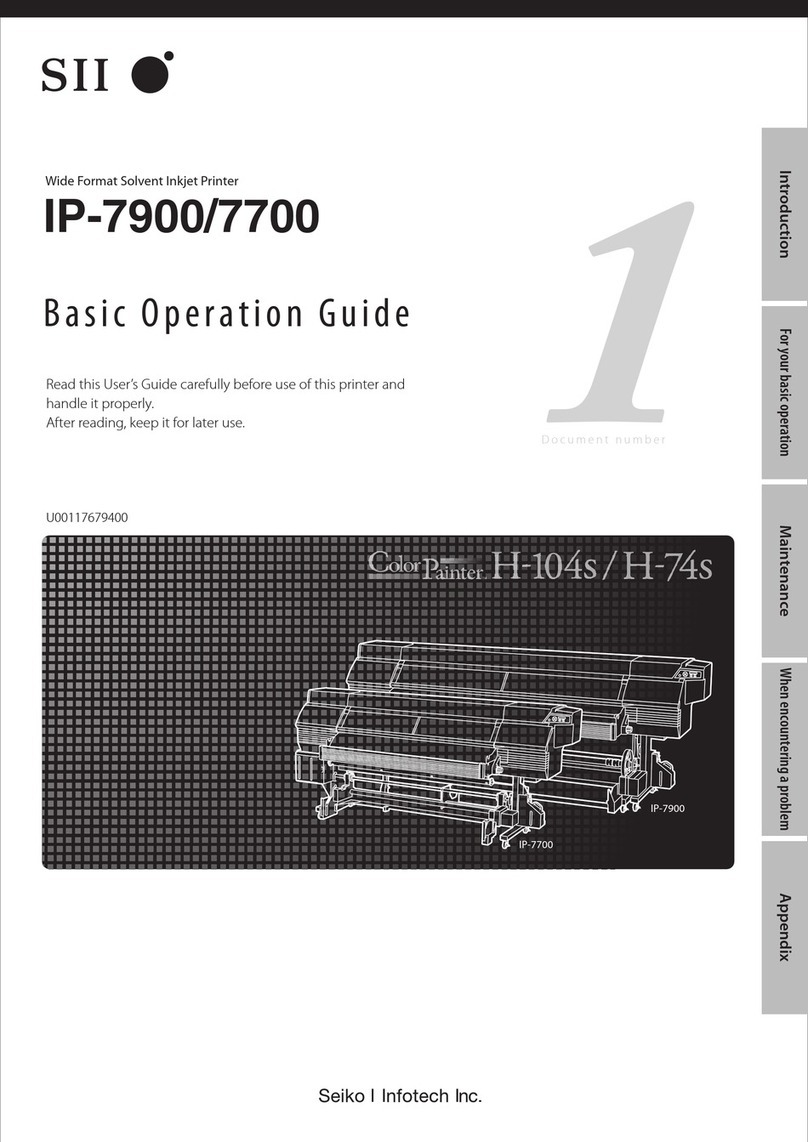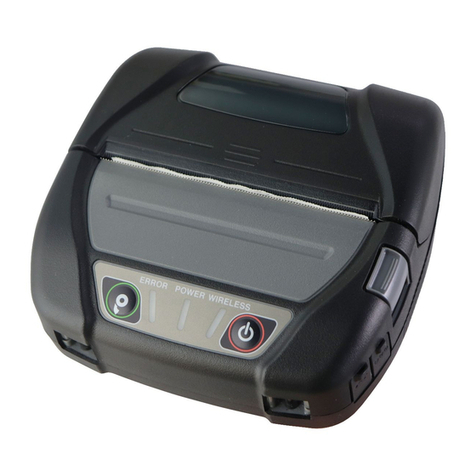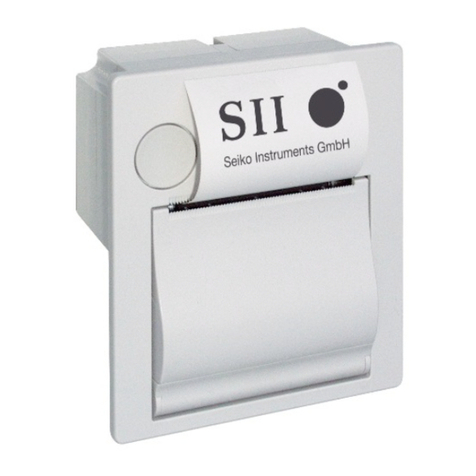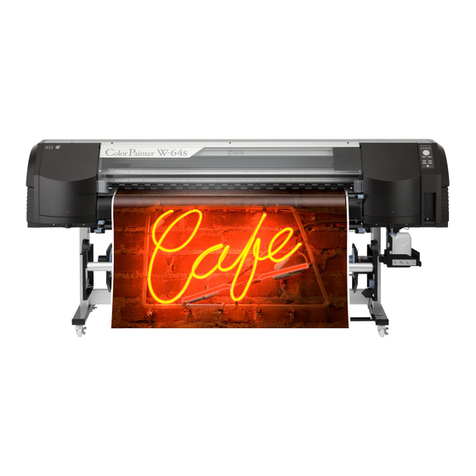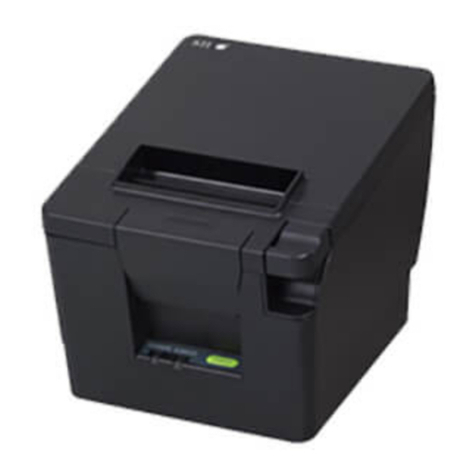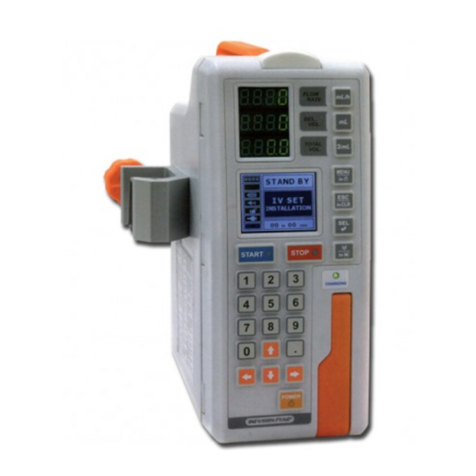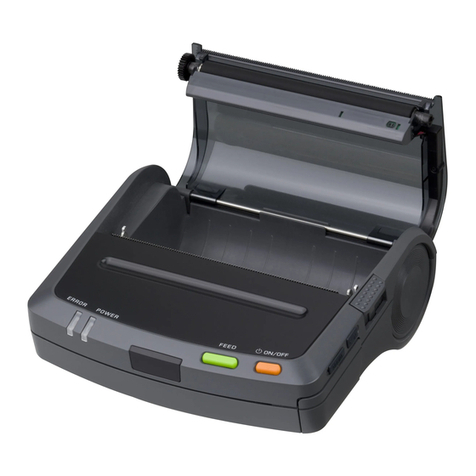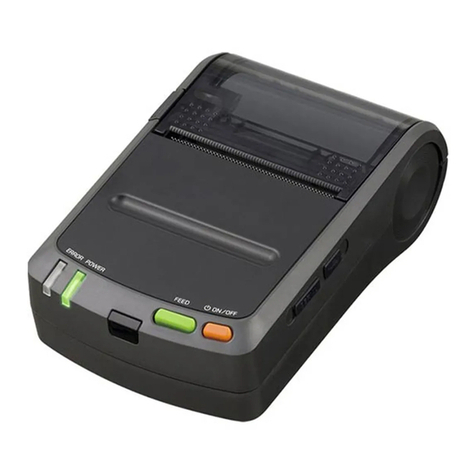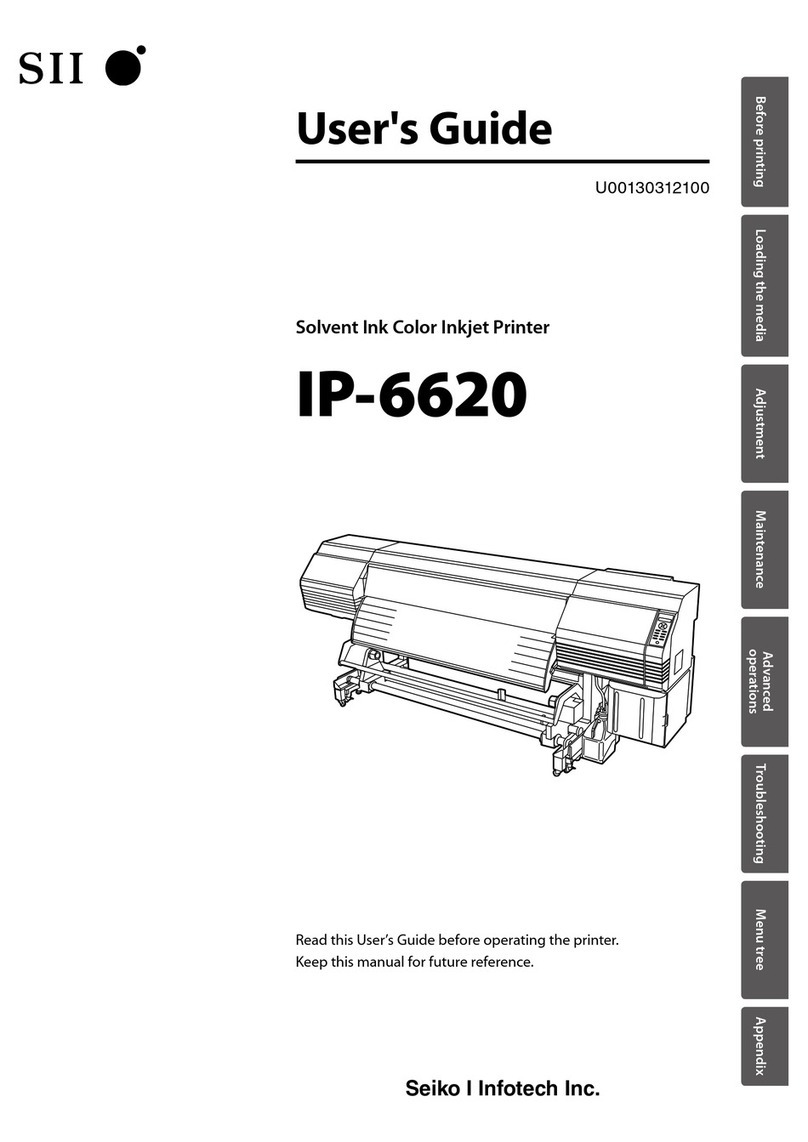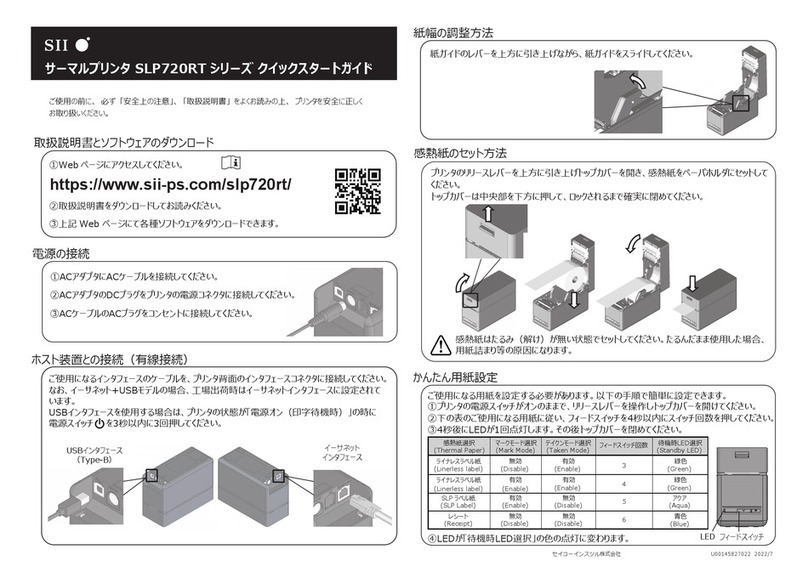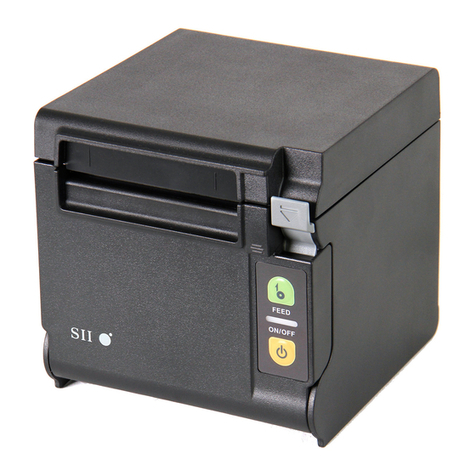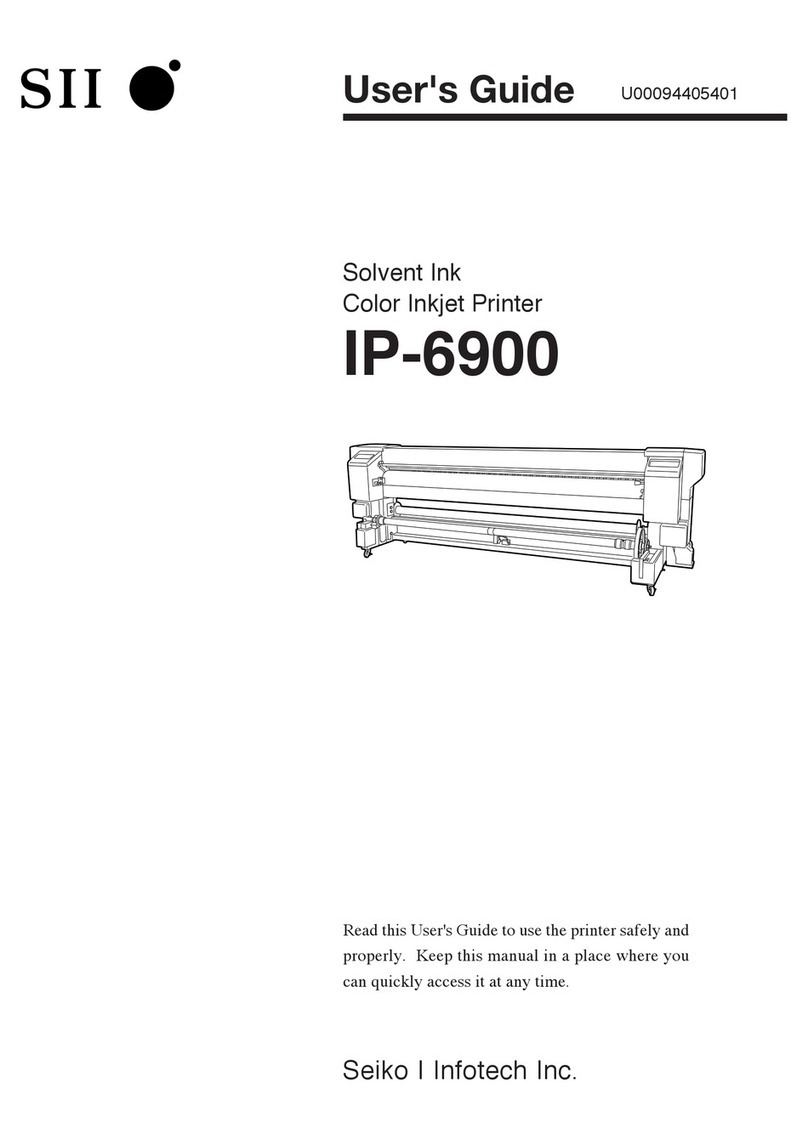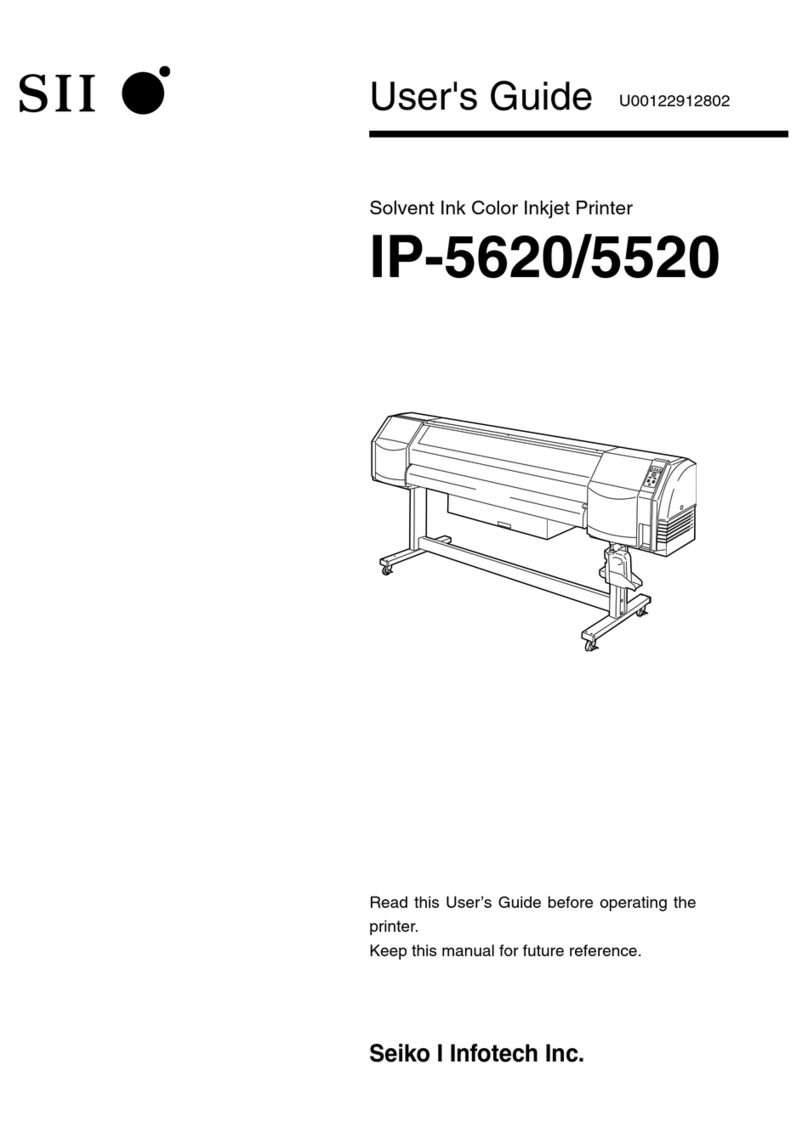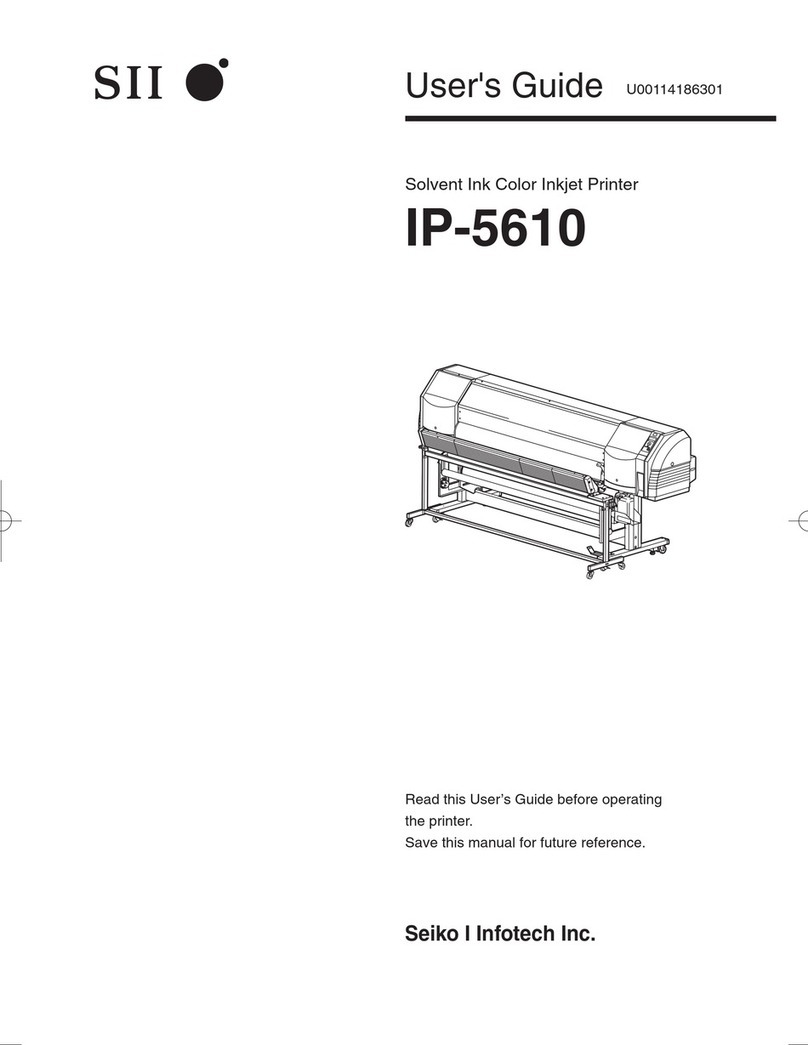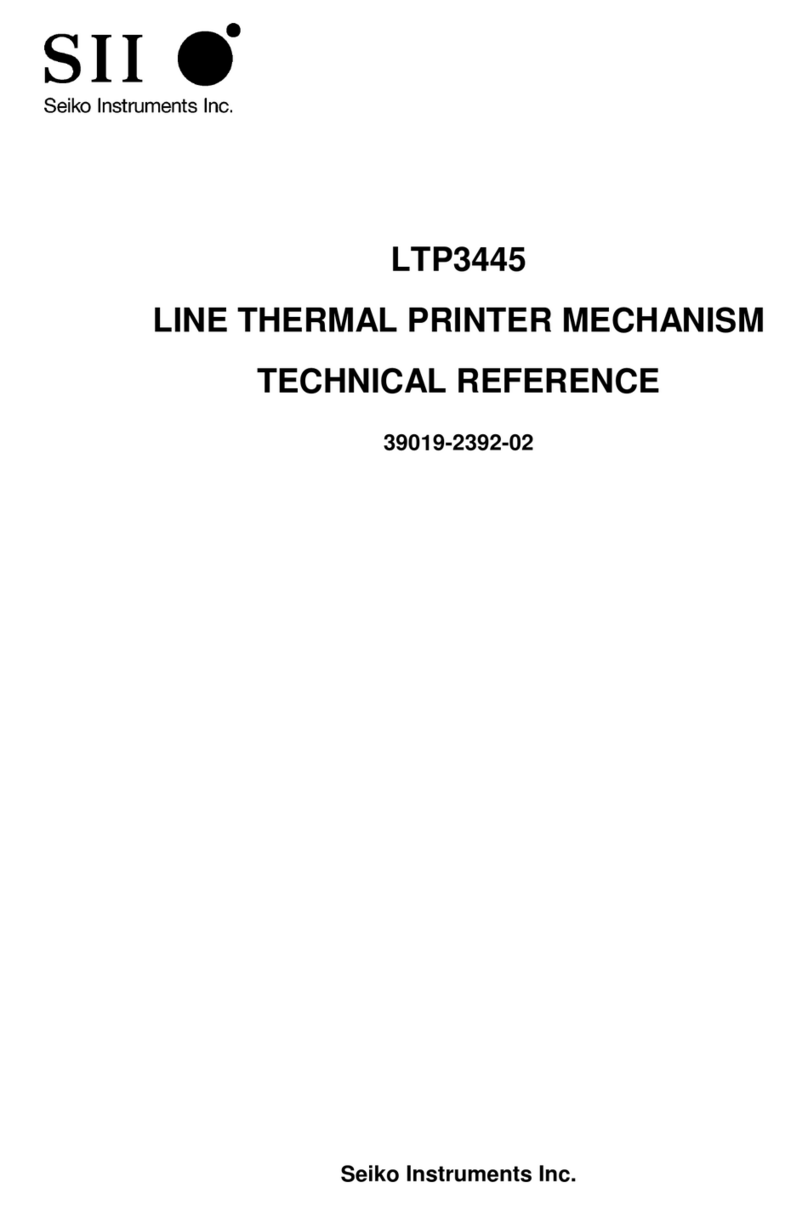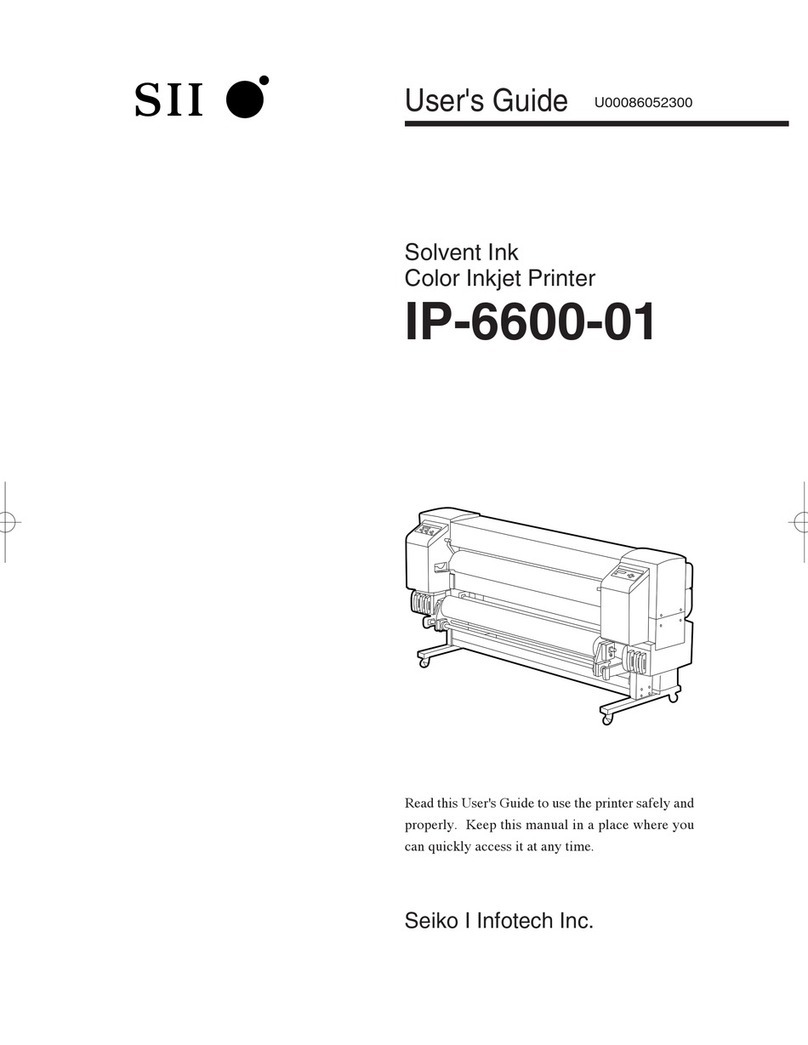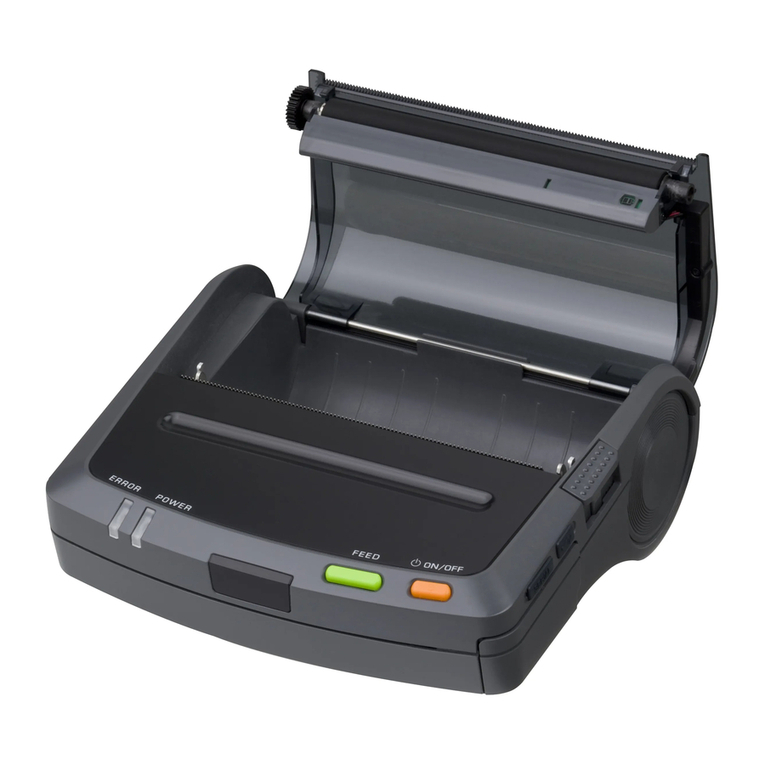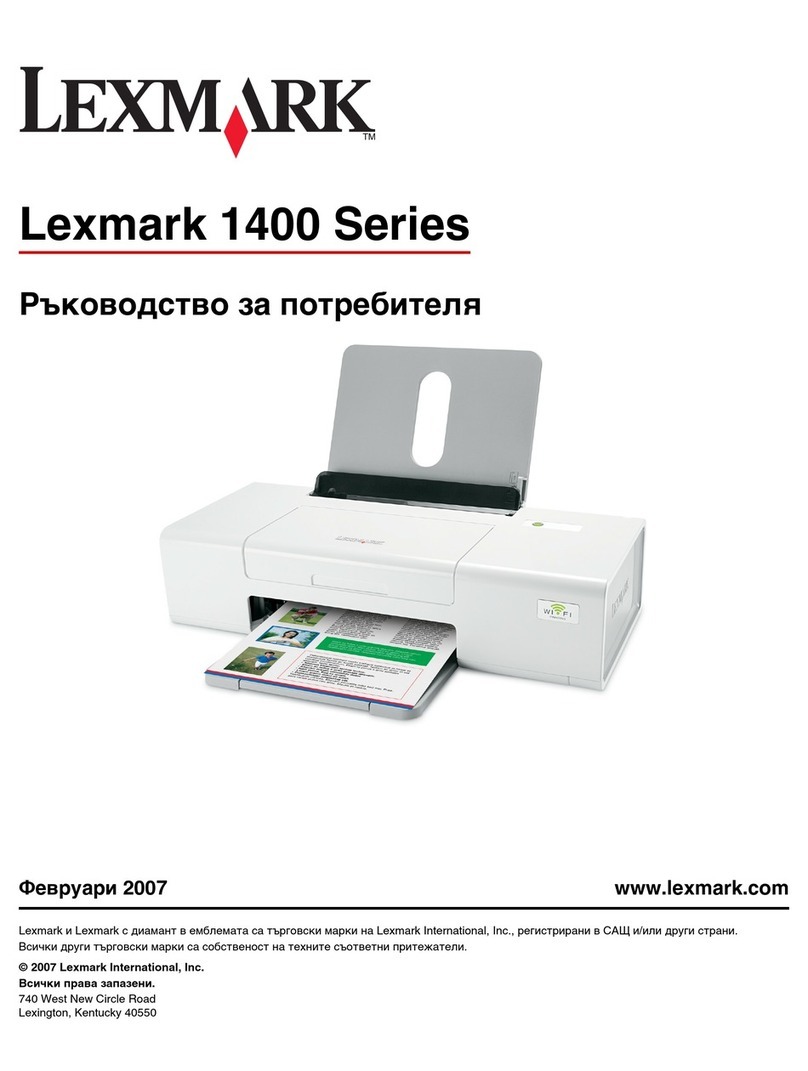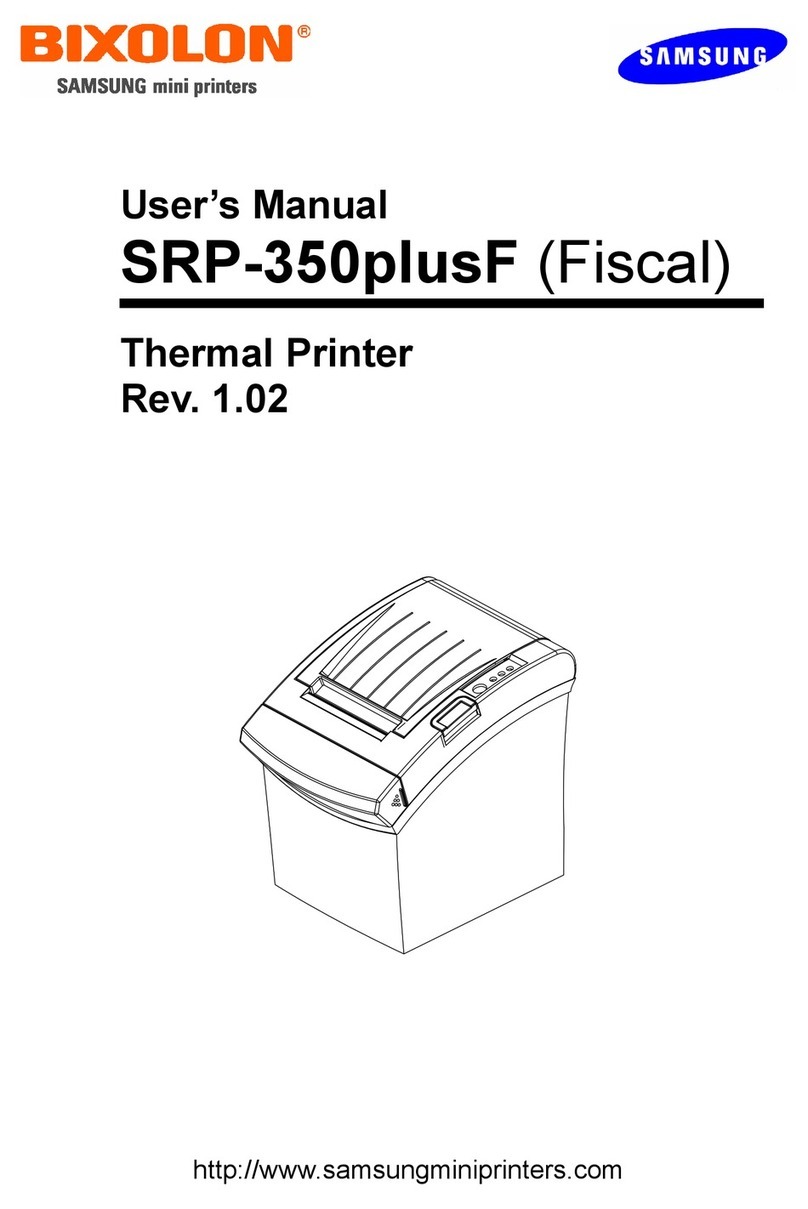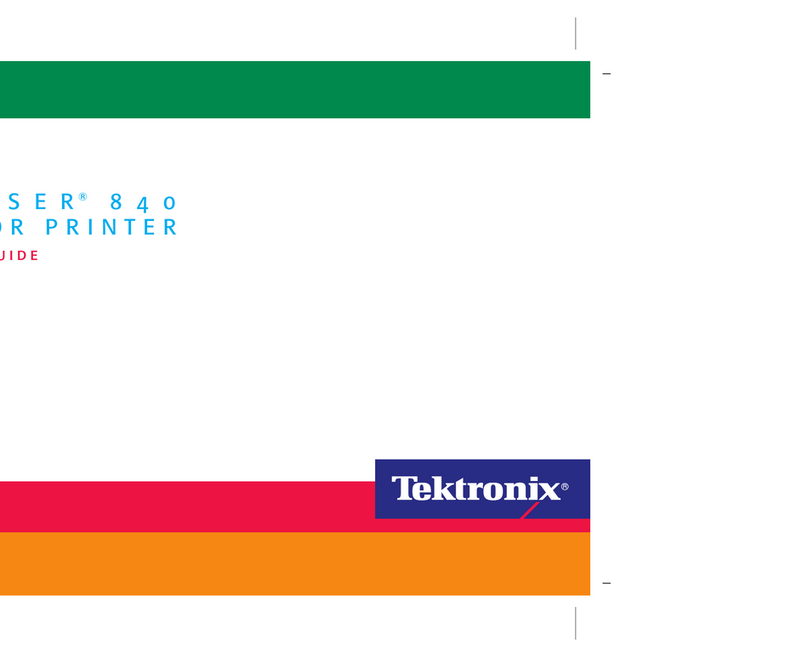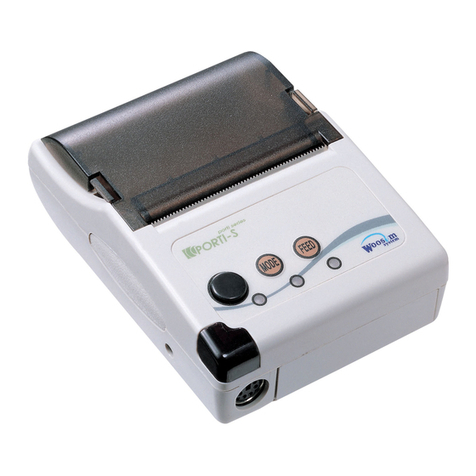
vii
Figure Page
3-1 Thermal Head Control Pin Assignment (B Head-mounted Printer)..................................3-1
3-2 Motor and Switch Control Terminal Assignment (B Head-mounted Printer, MTP102)....3-2
3-3 Motor and Switch Control Terminal Assignment
(B Head-mounted Printer, MTP201 and MTP401)...........................................................3-2
3-4 Thermal Head Control Terminal Assignment (G Head-mounted Printer) ........................3-3
3-5 Motor and Switch Control Terminal Assignment (G Head-mounted Printer) ...................3-3
4-1 Timing Chart .....................................................................................................................4-2
4-2 Printing Start Timing Chart ...............................................................................................4-3
4-3 Continuous Printing Timing Chart (Home Switch Detection Method) ..............................4-3
4-4 Continuous Printing Timing Chart (Timing Signal Method)..............................................4-4
5-1 MTP102 (B head-mounted) Appearance and External Dimensions................................5-2
5-2 MTP201 (B head-mounted) Appearance and External Dimensions................................5-3
5-3 MTP401 (B head-mounted) Appearance and External Dimensions................................5-4
5-4 MTP201 (G head-mounted) Appearance and External Dimensions................................5-5
5-5 MTP401 (G head-mounted) Appearance and External Dimensions................................5-6
6-1 Sample Circuit Block Diagram (B Head-mounted Printer) ...............................................6-2
6-2 Sample Circuit Block Diagram (G Head-mounted Printer)...............................................6-3
8-1 MTP102 Printer (Back).....................................................................................................8-1
8-2 Mounting with Screws (MTP102 printer) ..........................................................................8-1
8-3 Mounting without Screws (MTP102 printer) .....................................................................8-2
8-4 MTP201 and 401 Printers (Back) .....................................................................................8-2
8-5 Mounting with Screws (MTP201 and 401 Printer)............................................................8-3
8-6 Mounting without Screws (MTP201 and 401 Printer).......................................................8-3
8-7 Mounting the Paper Cutter................................................................................................8-4
8-8 Mounting a Roll Holder for Heat Sensitive paper .............................................................8-5
8-9 Roll without Core ..............................................................................................................8-5
8-10 Bend Radius of Flexible Cable .........................................................................................8-7
8-11 Moving the Head Carrier...................................................................................................8-8
8-12 Removing the Flexible Lead Wire.....................................................................................8-8
8-13 Pulling out the Flexible Cable Plate..................................................................................8-9
8-14 Pulling out the Head Unit..................................................................................................8-9
8-15 Inserting the Head Unit Terminal......................................................................................8-10
8-16 Rotating the Head Portion of the Unit...............................................................................8-10
8-17 Sliding the Head along the Guide of the Head Carrier.....................................................8-11
8-18 Pushing the Flexible Cable Plate......................................................................................8-11
8-19 Inserting the Flexible Cable..............................................................................................8-11
Downloaded from Arrow.com.Downloaded from Arrow.com.Downloaded from Arrow.com.Downloaded from Arrow.com.Downloaded from Arrow.com.Downloaded from Arrow.com.Downloaded from Arrow.com.
